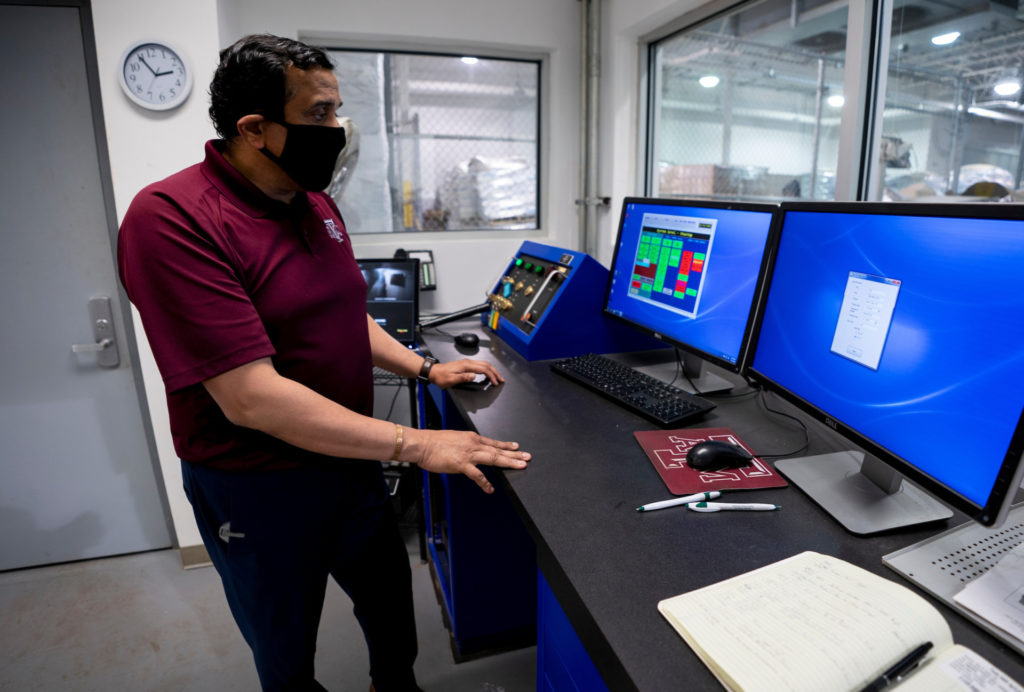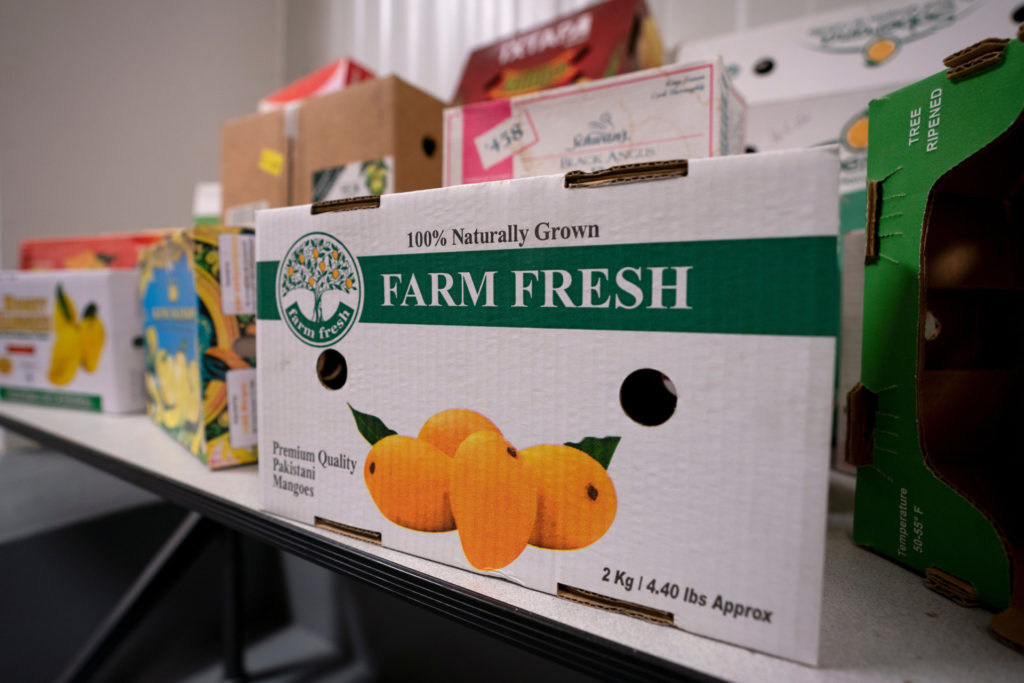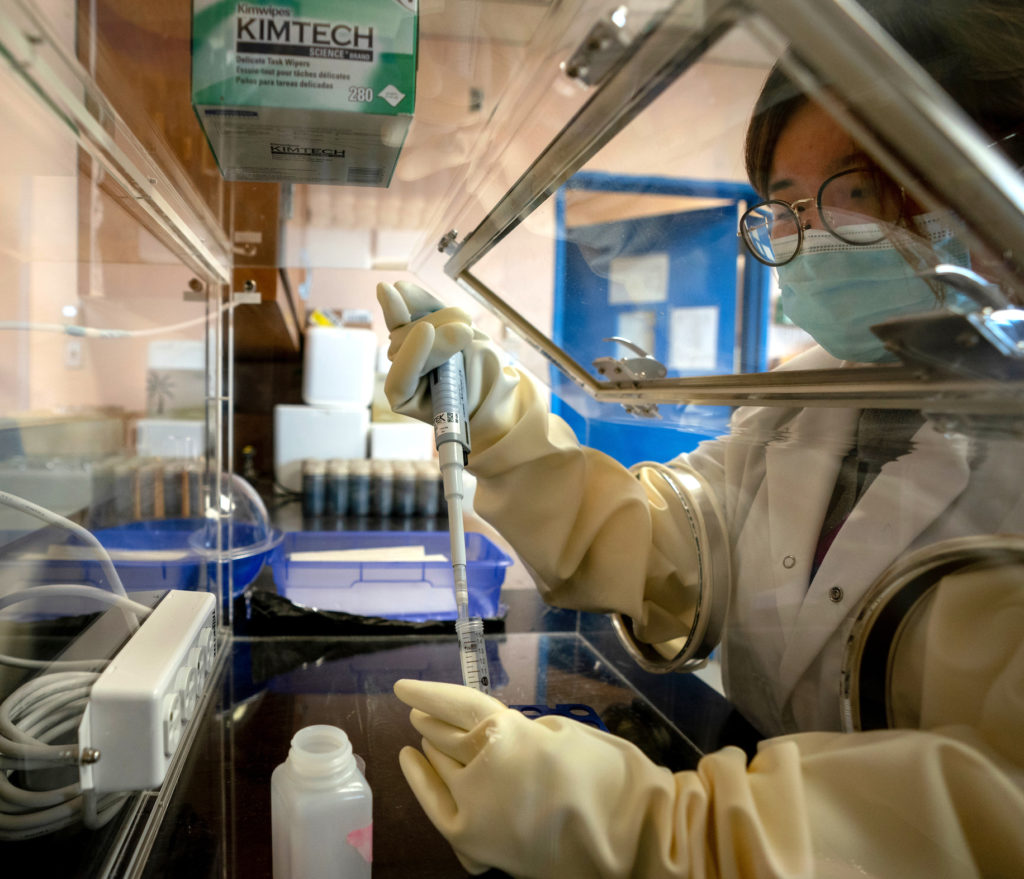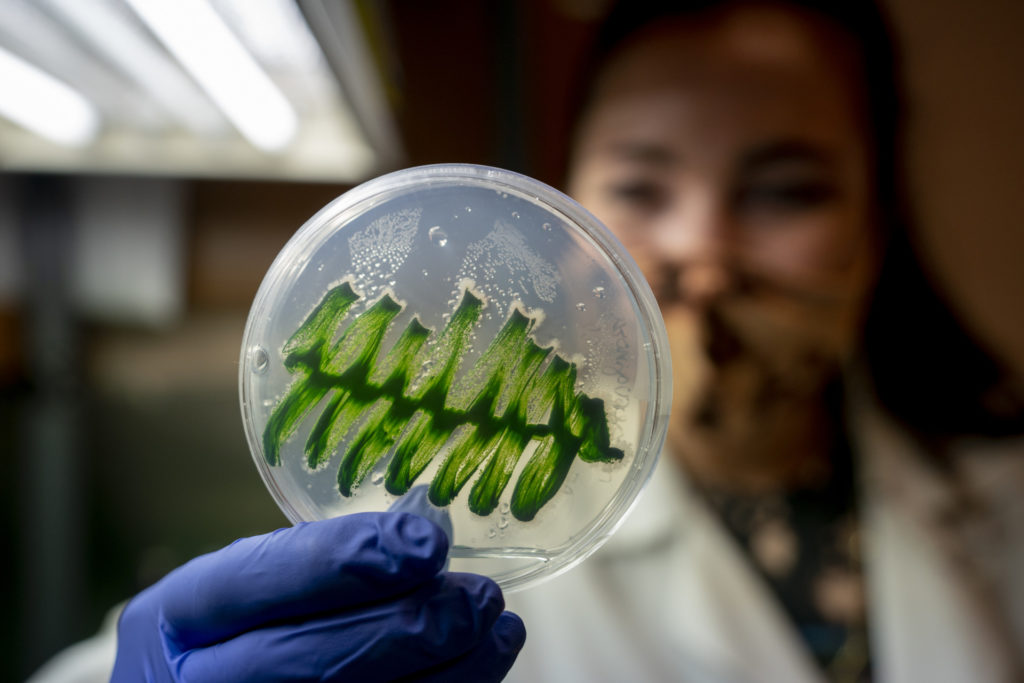Texas A&M center world leader in electron beam technology
Food safety, medicine, environmental health among variety of applications
While Texas A&M University is world-renowned for a variety of reasons, most people don’t know electron beam research and application are among them. But the National Center for Electron Beam Research, more commonly known as “the eBeam center,” is a world leader in accelerating the commercial use of this advanced technology with myriad applications.

“We have two decades of experience in performing electron beam, or eBeam, research and finding novel applications that encourage commercial adoption of this technology,” said Suresh Pillai, Ph.D., center director in the Department of Food Science and Technology in Texas A&M’s College of Agriculture and Life Sciences.
The eBeam center, located on the Texas A&M campus in Bryan-College Station, is a full-scale commercial facility that allows private industry to test the spectrum of the technology’s commercial uses. Those uses include medical device sterilization, food safety, agriculture and environmental remediation.
Texas A&M has the only such facility in the world located on a university campus, and the center serves as a major research resource for university, government and industry scientists.
What does the eBeam center do?
The eBeam center is a national and international leader in eBeam and X-ray technologies. Work at the center encompasses fundamental research, translational research, academic courses, graduate and undergraduate student training, and outreach activities.

“The eBeam center brings together stakeholders from the U.S. and worldwide, and provides an unbiased venue to carry out strategic eBeam and X-ray research, education, technology commercialization and outreach.”
In 2014, the center was named an International Atomic Energy Agency, IAEA, Collaborating Center for eBeam use in food, health and environmental applications. In 2020, the facility was funded by the National Nuclear Security Administration’s Office of Radiological Security as a Center of Excellence for Low-Energy Electron Beam Technology for its adoption and development of non-radioactive alternative technologies.
“Among other things, research and outreach activities at the center will continue to improve nuclear security throughout the world by advancing alternative technologies,” Pillai said.
The center was also recently awarded a U.S. Environmental Protection Agency Science to Achieve Results, or STAR, grant to investigate the applicability of eBeam technology to break down per and polyfluoroalkyl substances, known as PFAS, in landfill leachates, wastewater, sludges and groundwater. PFAS are toxic chemicals found in items such as waterproofing materials and nonstick pans and have been shown to be harmful to human health.
The center will hold its 11th annual Hands-On Electron Beam Technology Workshop April 25-29 on the Texas A&M campus.
What is eBeam technology?
The technology involves high-energy beams of electrons produced from commercial electricity. No radioactivity is involved, and the energy of the electrons and length of exposure varies for different applications.
This platform technology has been employed to significantly improve food safety, enhance the sterility of single-use medical devices, ensure phytosanitary quality and help eliminate environmental pollution. The technology can also be used to improve the durability and quality of pharmaceuticals as well as improve efficiency in biofuel and petroleum production.
Students benefit from research experience

Pillai said having a world-class facility at the Texas A&M campus also provides a unique learning opportunity for students.
“We involve students in our ongoing research, which introduces them to advanced technologies and their application,” he said. “Understanding the use and impact of cutting-edge technology like electron beam irradiation will also give them an edge in future academic or professional career endeavors in food science and technology.”
Pillai said his lab research team includes doctoral and master’s graduate students and undergraduates in business, food science, biomedical sciences, chemical engineering and electrical engineering.
EBeam technology for food safety and improvement
Among the center’s projects are those intended to enhance food safety and protect against the importation of invasive insects and pests. Researchers are also involved in developing new processes for crop improvement and developing eBeam and X-ray technologies customized for different foods and agricultural products.
“On food items like produce and stored grains, low doses of eBeam can eliminate insect pests,” said Keyan Zhu-Salzman, Ph.D., a professor in the Department of Entomology who works with the center on the use of eBeam technology to kill storage insects.
Unless controlled, insects can totally destroy stored food items.
“This is an excellent technology for insect control,” she said. “I’ve been investigating the effects of eBeam on the cowpea bruchid, a type of beetle affecting all legume seeds for much of the world.”
Zhu-Salzman said her application of eBeam technology disrupts insect development and reproduction, making it impossible for them to propagate subsequent generations.
“The same technology can also be used to treat for a wide variety of other storage and invasive insect pests,” she said.

In one of the largest tests of the facility’s technological capabilities, in the summer of 2018 the center applied eBeam treatment to more than a million 5-pound boxes of mangos imported from Mexico to eliminate possible invasive pests.
Currently, the center is working with a leading food caterer to test eBeam technology for enhancing the quality of prepared meals.
In another project, Nithya Subramanian, PhD., and Muthu Bagavathiannan, Ph.D., both scientists in the Department of Soil and Crop Sciences, are working with Pillai to use eBeam irradiation for crop improvement.
“We have been collaborating to develop herbicide-resistance in crops such as sorghum, rice and wheat,” Subramanian said. “Electron beam irradiation has a high potential to induce genetic variation in plants and accelerate crop improvement. It can be used to introduce new traits in a preferred variety and to rapidly generate variability.”
Subramanian noted this approach is preferred in food crops for which GMO technologies are not accepted.
“The team is also working with breeders in selecting for other desired traits for crop improvement,” she said. “This treatment can also be used for vegetables and other crops.”
Human health and eBeam technology
A number of researchers are partnering through the center to develop the next generation of animal and human vaccines using eBeam and X-ray technologies. Efforts include two researchers from Texas A&M’s College of Engineering using eBeam technology to sterilize medical devices used for human health.
Matt Pharr, Ph.D., an assistant professor in the J. Mike Walker ’66 Department of Mechanical Engineering, is collaborating on the applicability of eBeam technology for medical device sterilization.
“We’re working with several medical device companies to develop sterilization methods that do not directly use a radioactive material such as cobalt-60 but instead uses electron beam technology to achieve sterility,” Pharr said.

Duncan Maitland, Ph.D., a professor in the Department of Biomedical Engineering, has used the lab for three types of research — sterilization dose studies of medical devices, eBeam impact on implantable polymers and eBeam crosslinking of polymers.
Pharr noted his research also included investigating how changing from cobalt-60-based modalities to eBeam modalities might affect the mechanical and physical properties of these devices.
“Electron beam technology can have an effect on polymers and may strengthen or weaken them, depending on the polymer,” Pharr said. “They also may impact functionality and optical characteristics. We are looking at how eBeam technology can impact or transform materials, most especially in ways that can enhance and improve them.”
Researchers are also working to quantify the economic and public health benefits of employing food irradiation.
“Quantifying the actual economic benefit to public health is a cornerstone of communicating and managing science-based risks,” Pillai said. “We are involved in efforts to quantify the many public benefits of electron beam technology.”
Treatment technologies for the environment
Another of the center’s far-reaching efforts is toward harnessing technologies to treat municipal drinking water and wastewater, as well as industrial waste streams.

“These projects are focused on disinfecting against microbial pathogens and destroying toxic compounds and other recalcitrant pollutants,” Pillai said. “They involve a team of researchers with expertise in microbiology, chemical engineering and process chemistry and are funded through federal and private sources.”
One of the researchers involved in another type of environmental remediation research is David Staack, Ph.D., associate professor of engineering in the Department of Mechanical Engineering.
“Dr. Pillai and I have been working with the Department of Soil and Crop Sciences to investigate energy-based methods for environmental decontamination and remediation,” Staack said. “We have done research sponsored by Chevron in collaboration with the eBeam center and our mechanical engineering department.”
Staack said one project uses high-dose eBeam treatment for the removal of petroleum hydrocarbons from soil. A second project is focused on destroying “forever chemicals,” such as PFAS used in items such as nonstick coatings, food and beverage containers and aviation fire-fighting foams. A third is investigating the use of eBeam technology to remove mercury from contaminated metals.
“The electron beam treatment was effective for environmental remediation in both water and soil,” Staack said. “And we were pleasantly surprised to find the soils we treated with eBeam technology were actually improved as a result.”
Acceptance of eBeam technology
The diversity of uses for electron beam irradiation technology has increased interest in the technology worldwide, Pillai said. And large-scale projects such as those done at the center have helped identify logistical challenges and strategies to optimize eBeam systems and make them more efficient and commercially viable.
He said the center is also working to improve the marketability, economics and consumer acceptance of irradiated foods.
“Continued research and partnerships with private companies and public agencies will be instrumental in the spread of the technology and its adoption within various industries into the future,” he said. “This technology is a viable investment, and we hope private industry and entrepreneurs will adopt it and help expand its use throughout the world.”


